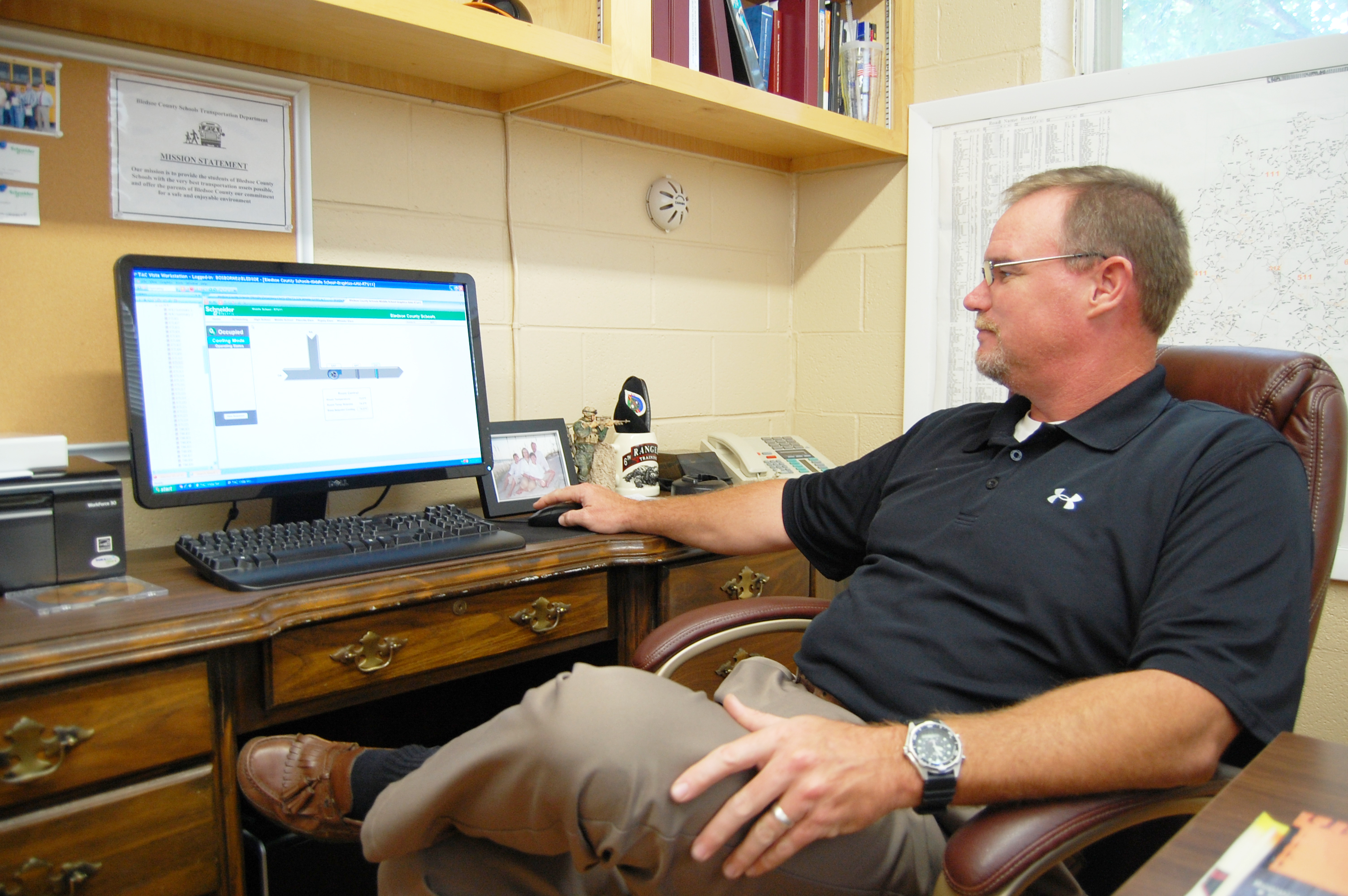 Brian Osborne, Bledsoe County Schools transportation director and the staff member who oversees the district's energy system, says he can power up and monitor energy use at any of the system's six schools. The new energy system has trimmed the school district carbon footprint by 27 percent, officials say.
Brian Osborne, Bledsoe County Schools transportation director and the staff member who oversees the district's energy system, says he can power up and monitor energy use at any of the system's six schools. The new energy system has trimmed the school district carbon footprint by 27 percent, officials say.BY THE NUMBERS
6: Number of schools1,886: Number of students301,732: Total square footage of county schools$500,000: Zero-interest, 7-year loan$412,270: Conventional loan, 12-year term$40,004: Energy Efficient Schools Initiative grant$952,274: Total upgrade project cost$51,890: Current year savings through April 2011Source: Bledsoe County Schools, Schneider Electric - Energy Solutions
PIKEVILLE, Tenn. - A $1 million energy upgrade in Bledsoe County's six schools trimmed the system's carbon footprint by 27 percent, reduced carbon dioxide emissions by 663 tons and methane emissions by 986 tons, officials said.
In tight economic times, a little relief on the light bill goes a long way, and reduction in emissions is always a step in the right direction, Bledsoe County Director of Schools Phil Kiper said.
"We've had $51,800 in savings through April 2011," Kiper said of the upgrades' impact so far.
"Utility bills in Tennessee have increased by 33 percent in the last five years," he said. "We knew that we had to commit to energy efficiency and conservation to provide our students with better quality and comfort."
Bledsoe County's annual costs for gas and electricity at its four largest schools - Bledsoe Middle and High schools and Wheeler and Pikeville elementary schools - climbed from $299,227 in 2007 to $331,377 in 2010, according to a cost analysis produced by the global company Schneider Electric-Energy Solutions, the firm the system contracted for the work.
Schneider vice president of sales Shon Anderson said the upgrade project "showcases Bledsoe's commitment to managing its energy effectively."
Automated building systems, a reduction in the amount of time systems are running and improvements to existing lighting are "helping improve the learning environment" while "drastically reducing costs," Anderson said.
The project got started about two years ago, and school officials and the contractor gradually upgraded lighting, heating and air conditioning and energy management systems for the entire school district, Kiper said.
He said the system partnered with Schneider Electric, based in Palatine, Ill., and used money from a $500,000 state Energy Efficient Schools Initiative no-interest loan to help pay for the work and a $490,000 loan approved by the Bledsoe County Commission. A $40,000 EESI grant paid for the rest of the project.
Brian Osborne, the district's transportation director and energy systems manager, said the system saves guesswork, time and gas traveling from one school to another to check systems that now are just a mouse click away.
Osborne said he can turn air and heat systems on and off from his desktop at work or his laptop on the road or at home. Remote access will improve maintenance and upkeep, he said.
If something breaks down over the holidays, Osborne said, his daily check will alert him to a problem as early as possible.
"Not only do we track things to save money, this system is a preventative maintenance tool," he said. Systems that are turned off when not used will last longer.
Osborne said officials now will work on educating staff at the schools about how the system works so he and maintenance personnel can make the most of it.
Bledsoe is among a growing group of Southeast Tennessee school districts looking for some utilities savings through the initiative, according to officials. State records show school systems in Bradley, Cumberland, Franklin, Hamilton, McMinn, Meigs, Polk, Rhea and Sequatchie counties have received funding for energy efficiency updates since the program's launch in 2008.
Contact staff writer Ben Benton at 423-757-6569 or bbenton@timesfreepress.com.